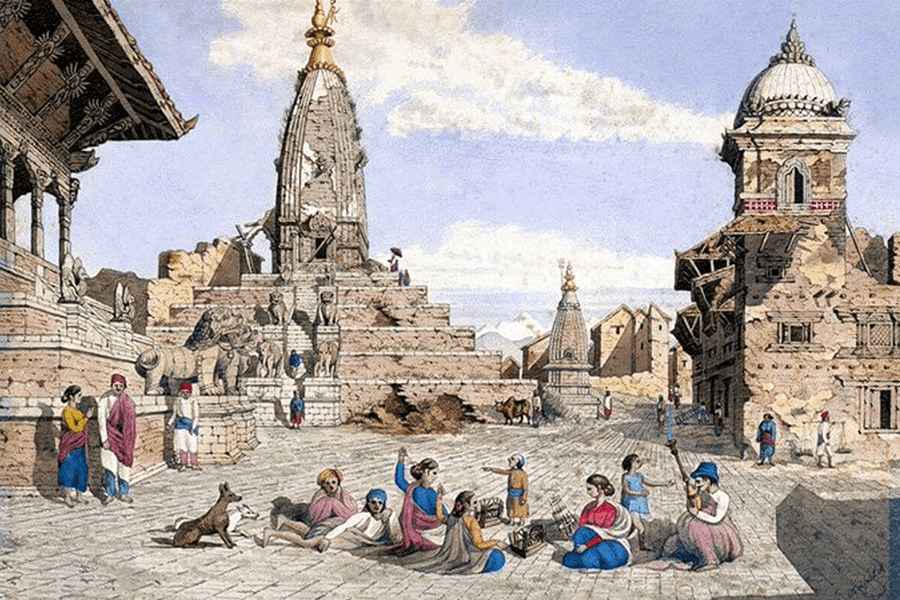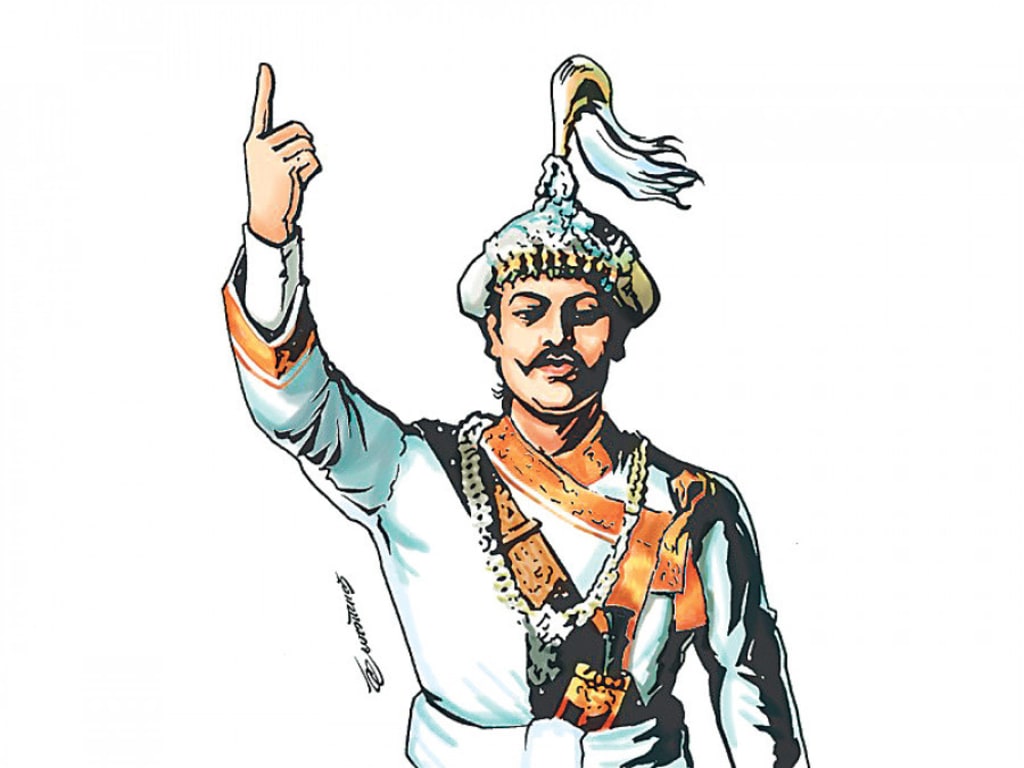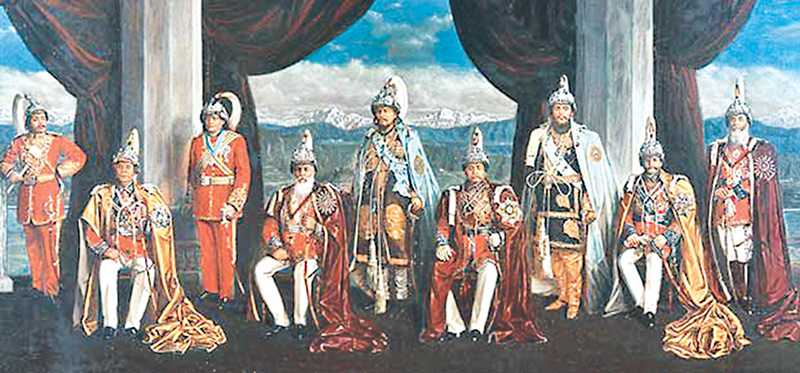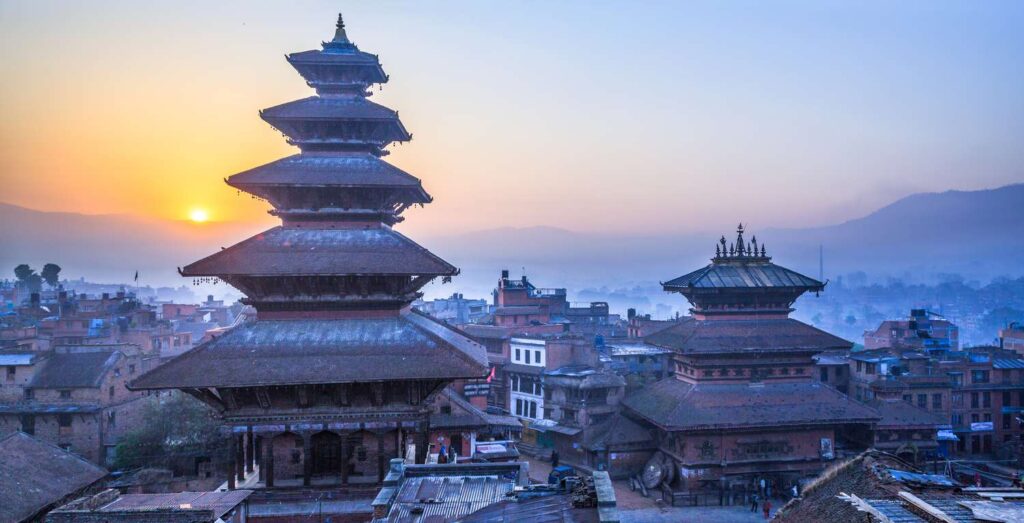
Although small, Nepal has a vibrant history dating back thousands of years. From ancient civilizations to modern political changes, Nepal has faced a variety of transformative events in its history that have shaped the country’s development. The country has faced a lot on its path to securing democracy, including several battles for independence, alongside a multitude of cultural establishments and different ranging dynasties.
Ancient Nepal (Prehistory – 12th Century AD)

The earliest human settlements in Nepal date back to as early as the Neolithic Era. Archaeological studies indicate that the region was inhabited during the Neolithic age. The first recorded civilization in the area, the Kirant, dominated from 700 to 800 BC. The Kirants were noted for their trade with India and Tibet, they also possessed an animistic religion.
The Rise of Hindu and Buddhist Influence

It is accepted that Buddha was born in Lumbini in 563 BC as Siddharta Gautama, making Nepal his birthplace. The Licchavi period (400-750 AD) saw an increase in Hindu customs with the Licchavi building temples and increasing trade with India and Tibet. The licchavi are known for their major role in transforming Nepal into a Buddhist and Hindu stronghold, using literature and other sources.
The Kathmandu Valley, comprising Kathmandu, Bhaktapur, and Patan, thrived during the reign of the Malla kings. Famous temples such as Pashupatinath, Swayambhunath, and Nyatapola were constructed during this period. The Mallas, famous for their administrative ability, also organized festivals like Indra Jatra and Machhindranath Jatra, which are still celebrated by people today.
The Rise of the Shah Dynasty and The Unification of Nepal (18th Century)

Through the mid-18th century, Nepal was a collection of small kingdoms. The most powerful of them was the Gorkha Kingdom, headed by Prithvi Narayan Shah. With the vision of unifying the whole country, Prithvi Narayan Shah initiated a series of military campaigns to first unite and conquer. In 1768, he captured Kathmandu, which resulted in the fall of Malla’s rule and the onset of the Shah Dynasty.
Shah possessed imperialistic ambitions and sought to portray Nepal as a self-sustaining country, thus, they adopted a foreign policy of isolationism to keep British imperialism in India at bay. He referred to the nation as a “yam between two boulders” which indicates the geographical place of Nepal, stuck between China and British India.
The Rana Rule (1846 – 1951)

In 1846, Nepal became the center of attention once again due to the Kot Massacre, where prime minister, Jung Bahadur Rana, swiftly took control over state affairs, establishing a hereditary Rana regime. The Rana eldership considered the Shah rulers as Intervener rulers, which greatly subdued their power and turned them into figureheads.
The Ranas followed pro-British demands, siding with the British Empire in several conflicts like WWI and WWII. In exchange, Britain guaranteed that they would allow the Ranas to control Nepal. The Ranas would enforce their rule through strict autocracy, quelling education, and the country’s interaction with the rest of the world.
Over time, people grew increasingly agitated with Rana’s rule resulting in the birth of constitutional movements. The Nepali Congress under King Tribhuvan’s and India’s support successfully revolted against the Ranas in 1951, restoring the monarchy and transitioning the nation towards democracy.
The Panchayat System and the Path to Democracy (1951–1990)
Once the Ranas were overthrown, King Tribhuvan and later his son, King Mahendra, ruled the nation as a constitutional monarchy. He did, however, seize the opportunity and oust democratic rule in 1960 maintaining power through the ‘Panchayat system’, a strict one-party autocracy that consolidated power for the king. This eliminated any form of political activity and civil liberties.
Over the years, many people expressed their dissatisfaction with the system leading to the Jana Andolan (People’s Movement) in 1990, which compelled King Birendra to respond with the introduction of a constitutional monarchy with multi-party democracy. In 1991, Nepal was established with a new constitution marking the beginning of a democratic nation.
The Maoist Insurgency and the Fall of the Monarchy (1996-2008) A Narrative Account Of The Shocking Turn Of Events in Nepal:

It wouldn’t be an exaggeration to mark 1990 as an exemplary year that set the entire world in motion for political change owing to the unavoidable rise of the internet in different parts of the globe, with the 1996 Indian Economic liberalization proving to be a historical catalyst for the profound change in industrial and economic growth. Even came hand in hand with a sudden surge in tourism around the world, especially in Nepal which served as a source for a great deal of economic reform. It also ushered the nation into a realm of hope and growth with the expectation of decent stability, and prosperity, unfortunately, it was accompanied by constant isolation, and grave social disorder, along with deep corruption as the backbone which was politically controlled.
This was then followed by the dreadfully catastrophic civil war in February 1996 that was the consequence of a conflict between the Nepalese monarchy, which vehemently supported authoritarianism and the NCM which aimed to instate a leftist regime. The civil war saw the death of over 17,000 while leaving behind many more disabled and injured which led to a strain of economic and political disorder.
shockingly in 2001* the shocking *Nepalese Royal Massacre occured. Allegedly Crown Prince Dipendra shot King Birendra and Aishwarya along with the entire class of royals before taking aim at himself. Which was followed by the death of King Gyaniendra, the former’s brother taking complete control of the rule.
By 2006 it led to the second jamboree of Anaolan where the movement managed to oust the Ganyendra-led regime enabling the transition of Nepal into a federal democratic republic.
This led to retired army general Parbraj Dylan being elected as the figurehead in the office on 28th May 2008 while abolishing the monarchy and signing the declaration of the ‘Federal Republic of Nepal’.
Modern Nepal (2008- Present)

Post the profound change in 2008 Nepal has suffered tremendously in challenges both economically as well as socially due to constant shifts in the nation’s government along with natural disasters.
In 2015, Nepal promulgated a new charter, officially placing it within the category of a secular federal republic with seven provinces.
2015 Earthquake

On April 25, 2015, a 7.8-magnitude quake hit Nepal that claimed the lives of about 9,000 individuals and wrought havoc on historical monuments, houses, and several pieces of infrastructure. Even though the nation got some aid from other global states, the slow pace of recovery put a spotlight on issues within governance.
Recent Political Developments
Owing to the complex political scene, governance in Nepal has changed frequently. Several major political parties like the Nepali Congress, the Communist Party of Nepal UML, and the Maoist Center, along with newer parties like Rashtriya Swatantra Party RSP are actively trying to din friction in the political event of Nepal. In spite of woes, Nepal has progressed in the fields of infrastructure, tourism, and emerging digital economy, albeit with daunting problems such as unemployment and rampant corruption.
Conclusion
Nepal’s history is a story of change and struggle, heavily spiced with cultural depth and beauty. From ancient civilizations to powerful dynasties and the arduous rounds of democracy to finally a republic, it has seen it all. Jade-studded into political instability and a crippling economy, it is still moving forward, suiting its identity as the diverse land of traditions and breathtakingly beautiful nature
